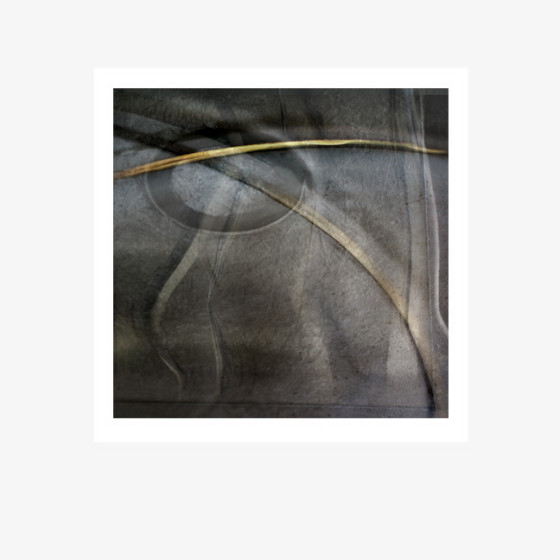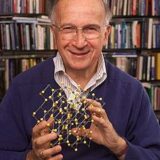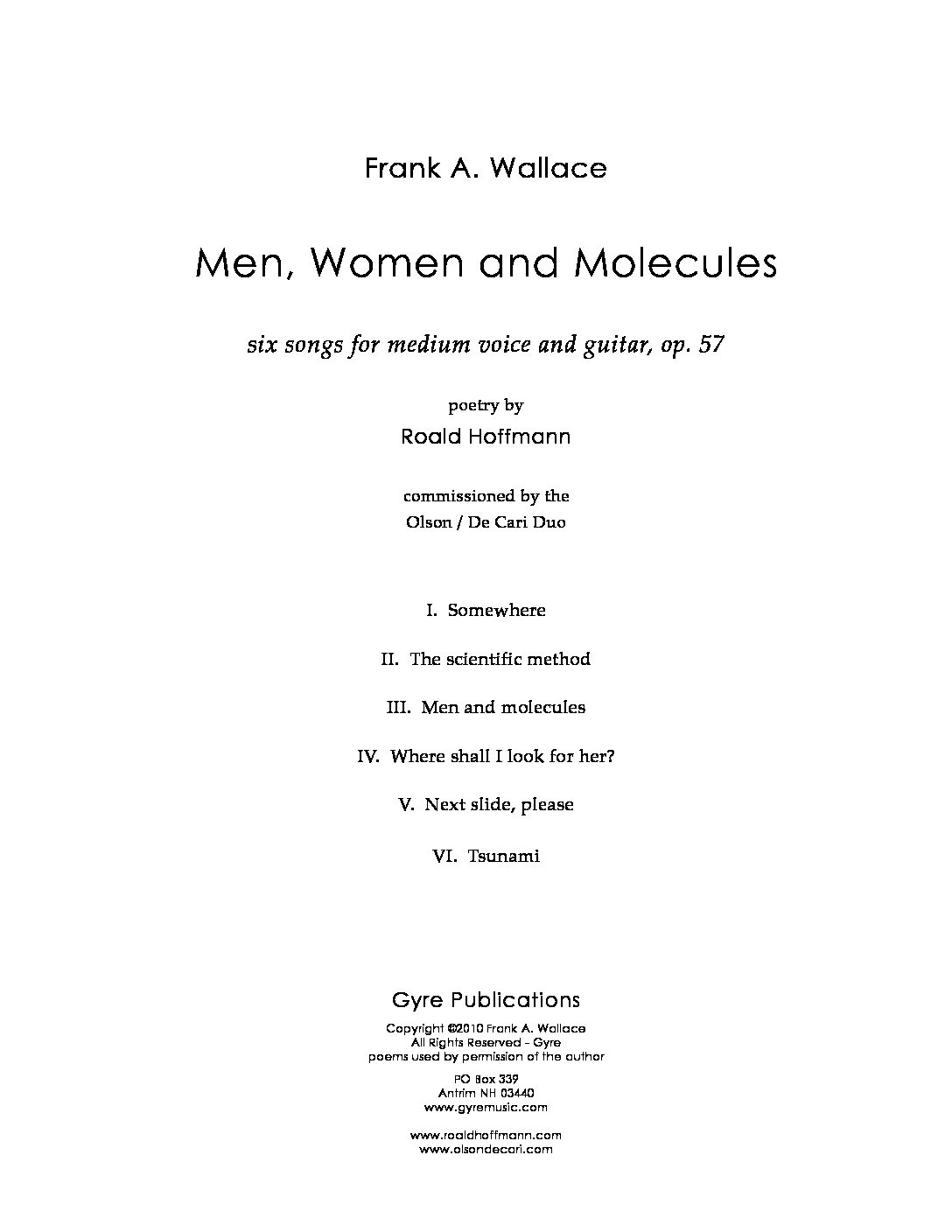Men, Women and Molecules | six songs by Frank A. Wallace
by Frank A. Wallace
six songs on texts by Nobel prize-winning chemist Roald Hoffmann for medium voice and guitar
SUGGESTED DONATION: $15.00
Olson / de Cari Duo, your piece “Men, Women and Molecules” — terrific! They were fabulous, did a wonderful performance. Loved them and the piece. Olson explained the text a little, which was helpful; both wonderful interpreters. So glad I went! — a fan after a concert
Lyrics: poetry in English by Roald Hoffmann
Commissioned by: Olson/De Cari Duo
Written in: winter, 2010
Duration: 16 minutes; 20 pages
World premiere: November, 2010 by Olson / De Cari Duo
Recording: by the Olson/De Cari Duo
All Gyre compositions are ASCAP
Copyright ©2010 Frank A. Wallace
Cover photography and design by Nancy Knowles
All rights reserved.
Tweet
Song and Science
John Olson and Gioia de Cari, known as the Olson/De Cari Duo from New York, conceived a project to commission songs written on texts inspired by science. Curious, I talked with them about their goals and dreams for the Project. We started a dialogue and a search for texts that had any connection to the world of science began.
John and Gioia met in Berkeley California before coming to MIT as graduate students in the mid 80’s. After MIT, John continued his life as a guitarist while pursuing a “day job” as a scientist in cancer research. Gioia abandoned her math career, but has recently “cashed” in on her experiences by writing and starring in a tremendously successful one-woman show called Truth Values: one girl’s romp through MIT’s male math maze. [www.unexpectedtheatre.org/truth_values]. She has been an actress and singer since childhood.
Meet the Poet
After several months exploring various paths, John called saying that they had met with a friend of theirs from Cornell. Roald Hoffmann is a Nobel prize-winning chemist, poet and survivor of the Holocaust. John sent a selection of his poems and I was given a website [www.roaldhoffmann.com] to explore. I loved the work and John and Gioia’s choices. So Roald sent me two poetry books. There are frequent references to his 15 months hiding in an attic in the Ukraine form 1942-43. And so I felt a need to find one poem that revealed this tormented and mysterious part of his childhood. I chose “Somewhere,” which has three stanzas. Each begins: “In me are hidden constellations;” “In me is the word that slaps worlds into being;” and “In me is a buried river that washes the mother lode.”
History meets now
After writing three songs, Roald sent me his new play entitled Something that belongs to you. The play juxtaposes scenes from 1943 and 1992, when the daughter of his family’s protectors attempts to return his mother’s wedding ring. The occasion forces his mother and himself to confront and share with their family the terrible truths and still-intense feelings of betrayal, hate and loss as well as the irony of the ring.
Roald says that Something that belongs to you changes some of the relationships and events of the period, for dramatic reasons, but remains true to the essentials of what actually happened to him during World War II. Reading the play myself confirmed my musical and poetic choices. Roald came from a loving family that had been ripped apart by the tide of hate in the 1940’s. He was young, however, and the images became muted though haunting. His successes in science, academia and in love, here in America, re-confirmed his solid commitment to life.
Major 7ths, etc.
The six-song-cycle begins with musical references to Roald’s Eastern European roots, minor scales with augmented seconds and compound meters. It progresses into lighter jazz harmonies, symbolic of his new homeland, in “Where shall I look for her?” and uses the image and music of “Amazing Grace” as sung by Judy Collins. The major seventh interval plays an important role throughout the cycle, both as a clashing dissonance, and as part of sentimental jazz chords. “Next slide, please” is a light hearted jab at the academic world of science, but it proved the most daunting to set. The dissonances and awkward melodies are intended as a technical or scientifically calculated counterpoint to, rather than a direct expression of, the inherent humor in the poem. We all agree now that it is our favorite of the set.
All poetry by Roald Hoffmann:
I. Somewhere
II. The scientific method
III. Men and molecules
IV. Where shall I look for her?
V. Next slide, please
VI. Tsunami
Click on Men and Molecules – Notes and poems to download the entire set of poetry and extensive notes by composer and author on the nature of the work. Below is the “theme song.”
MEN AND MOLECULES
Cantilevered methyl groups,
battered in endless anharmonic motion.
A molecule swims,
dispersing its functionality,
scattering its reactive centers.
Not every collision,
not every punctilious trajectory
by which billiard-ball complexes
arrive at their calculable meeting places
leads to reaction.
Most encounters end in
a harmless sideways swipe.
An exchange of momentum,
a mere deflection.
And so it is for us.
The hard knock must be just right.
The eyes need lock, and
glimmers of intent penetrate.
The setting counts.
A soft brush of mohair
or touch of hand.
A perfumed breeze.
Men (and women) are not
as different from molecules
as they think.
Roald Hoffman





